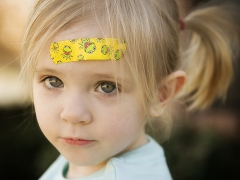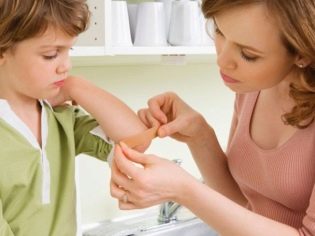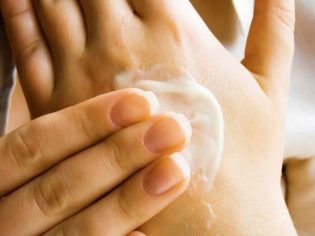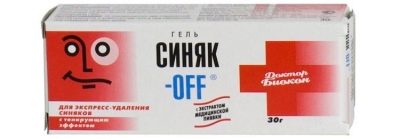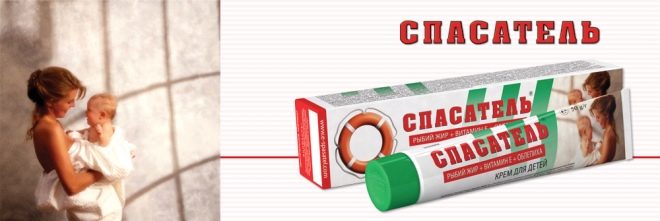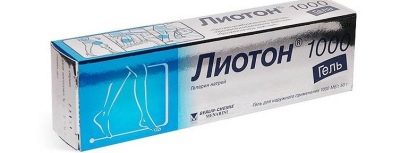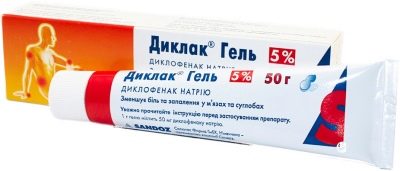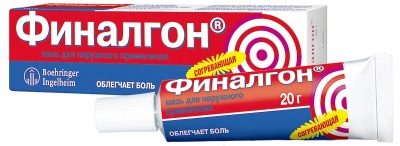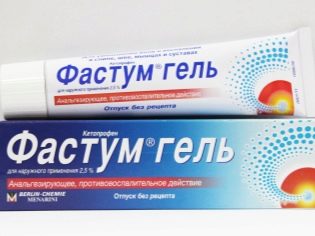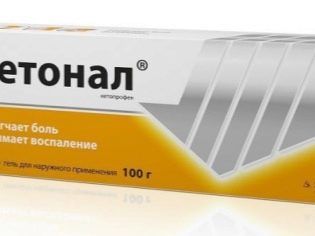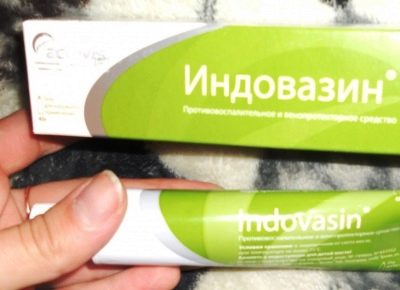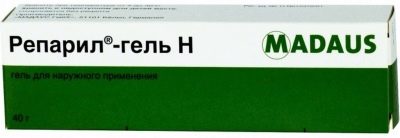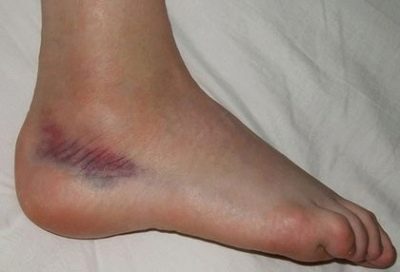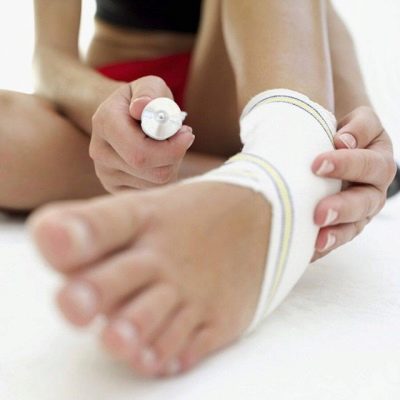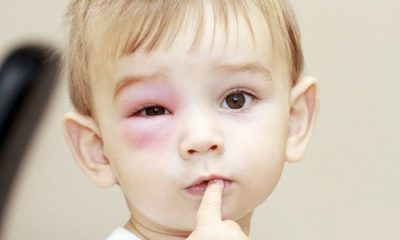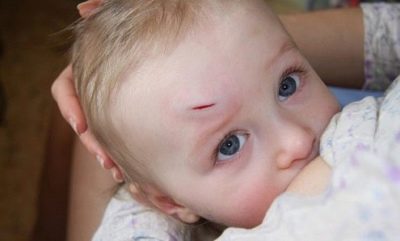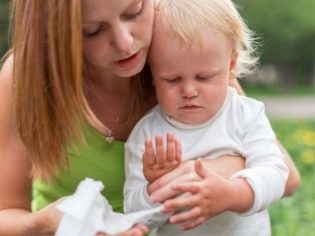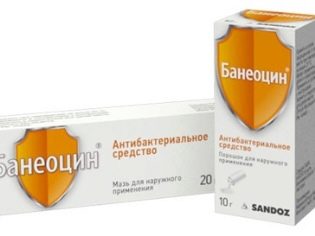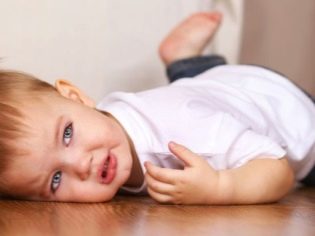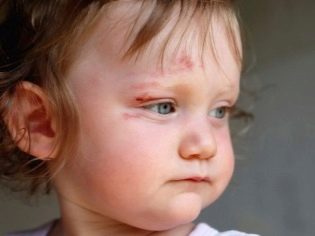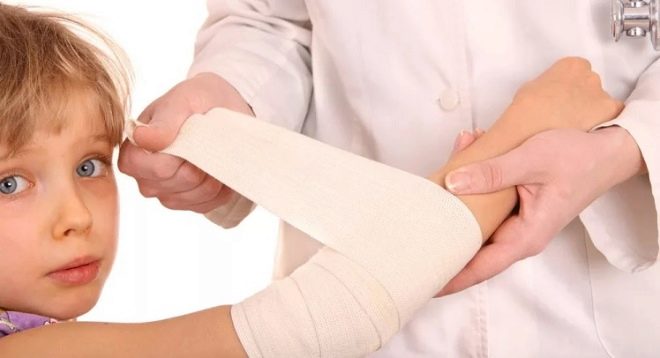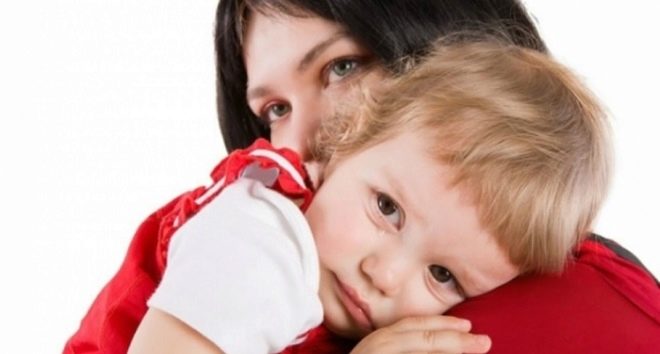Remedies for bruises and sprains for children
As soon as the kids learn to move independently in space, long before the first steps, they begin to actively explore the world. This process continues and is gaining momentum after the children learn to walk. In this case, falls, bruises, bruises and abrasions are inevitable.
Save the baby from them is impossible. But you can always have on hand tools that ease the pain of such injuries. In this article we will provide an overview of the most effective drugs for bruises and sprains allowed for use in childhood.
How to choose the right tool?
The benefits of drugs that relieve pain and swelling with bruises and sprains, eliminate bruises, for the whole family is obvious. But if adults without any hesitation go to the pharmacy and buy themselves any post-traumatic means, then this approach is unacceptable for children. Most adult ointments for bruises and gels from hematomas can cause allergies in a child, and this is fraught with even more swelling.
Before you choose a tool specifically for the curious baby, it should be understood that All drugs that are used after injuries are divided into three groups according to the type of action:
- Painkillers This group includes ointments and gels, as well as sprays with a pronounced analgesic effect. This is mainly about nonsteroidal anti-inflammatory drugs for local use. Without such a drug can not do with a strong sprain, dislocation, rupture of ligaments and muscles.
- Coolants. Such drugs are indispensable for severe injury to the muscles and soft tissues. With such injuries, bones, tendons, cartilage and ligaments remain intact. Ointments and gels of this group when applied to the skin create a cool effect, as well as reduce swelling and moderately anesthetize.
- Warming agents. These drugs cause irritation on the skin, this activates the blood flow to the injured part of the body. This effect is useful for bruises and sprains several days after the injury. In the early stages of the use of warming drugs can not.
In the home first aid kit it is best to have drugs of each group, because injuries and situations are different. But at the same time it is important to remember, and it is better to write down and attach a small "Cheat sheet" that will help in an emergency situation quickly navigate and choose the right drug:
- If no more than a day has passed since the moment of injury, you can only smear with anesthetics and anti-inflammatory drugs, including cooling gels. Warming ointment is prohibited!
- If more than three days have passed since your injury, you can start using warming ointments.
- In case of violation of the integrity of the skin, if the injury is combined with abrasions, wounds, it is impossible to apply money at all.
- For fractures and dislocations, ointments do not help. Need qualified medical care in an emergency room. But after helping the doctor may allow the use of anesthetic ointments in case of dislocation, they will help to somewhat reduce the pain during the first days after the injury.
Drug List
Children up to 1 year
Usually prescribed:
- «Troxevasin». This drug has proven itself in the treatment of varicose veins due to its surprisingly rapid ability to influence the walls of blood vessels.Troxerutin, which is the main active ingredient, strengthens blood vessels, prevents the development of puffiness and large hematomas. Gel is applied to the sore spot, provided that the skin is not damaged and there are no wounds, and it is rubbed with the finger of the hand with light massage movements completely. In pediatric practice "Troxevasin»It is applied both for children about one year, and for children older than one year. Local allergic reactions are possible.
Manufacturers indicate that the gel should not be taken before the age of 15, however, this is not a ban, but only a recommendation to use the drug carefully, because its effect on children has not been studied enough.
- "Bruise-Off". The composition of this drug - pentoxifylline and medical leech extract, which makes this anti-inflammatory gel indispensable for bruises and hematomas. This tool has no contraindications, when using it there were no cases of overdose, and therefore the possibility of its use for children is obvious and indisputable. The drug is able to quickly rid the child of bruises, swelling and bruising with compaction. It is not recommended to apply it more than 5 times a day.
- "Rescuer". It is a balm based on herbal ingredients. He allowed to use even babies. The tool has a broad spectrum of action, it can be applied to abrasions and scratches, small wounds and burns, as well as bruises and hematomas.
In order to treat balsam with an abrasion, it must first be treated with a non-alcohol antiseptic, with bruises and hematomas, the ointment is applied with a middle layer on clean and dry skin. Apply a balm can be from 2 to 5 times a day.
Children from 1 year
Doctors recommend:
- «Heparin ointment». Due to its composition, this tool, well known to many generations of Russians, effectively resists inflammation, reduces swelling in the area of injury, and also thins the blood and improves its circulation, which is important for the restoration of soft tissues, reduction of deep hematomas. If the child has a wound other than a bruise, it is impossible to use Heparin ointment, this can increase bleeding. Manufacturers indicate that children under 18 years of age are not prescribed ointment. However, this is due solely to the lack of evidence base of safety of the drug in childhood.
In practice, the ointment is recommended for children after 1 year, but its use must be coordinated with your doctor.
- "Lioton". As part of this gel - heparin sodium, which absorbs seals well, effectively removes puffiness and helps to restore injured tissue. In addition, the gel strengthens blood vessels, improves blood circulation. It is used not only for superficial bruises, but also for sprains, injuries of joints, muscle tissue.
When abrasions and any violations of the skin can not use the drug. There are no contraindications for use in children, but doctors recommend using a gel for children after a year to avoid an allergic reaction.
- «Traumel C». This is a homeopathic drug based on herbal ingredients. Available in various forms, but for bruises and sprains, only ointment can be used. Manufacturers talk about the age limit of 3 years, but in practice the drug is prescribed to children from 2 years. The tool is used for sprains and sprains, as well as for injuries of the joints.
Gel is rarely prescribed for monotherapy, it is usually recommended as part of complex treatment, for example, the effects of injury. Many traumatologists do not recognize this remedy at all, because it is not medicinal.
Children from 5 years
Often used:
- "Dolobene." This gel successfully combines the action of three substances: dimethyl sulfoxide reduces swelling, heparin has a strong anti-inflammatory effect, dexpanthenol improves granulation of damaged tissues. The gel is very effective for bruises and sprains, any closed injuries, bruises.It is prescribed for pain relief in the recovery process after damage to the ligaments, joints and muscles.
The product is considered to be quite allergenic, and therefore it is recommended that an allergy test be carried out after the purchase - apply a little gel on the child’s arm, on the back of the palm, and wait about an hour. If redness, hyperemia of the skin appears, the agent cannot be used.
- Diklak. This gel can really be called a means of first aid, since it quite quickly anesthetizes the place of injury. The drug belongs to the group of nonsteroidal anti-inflammatory drugs. The drug has an impressive list of side effects, therefore, it is recommended to use the drug only in consultation with the doctor and only for children who have already turned 6 years old.
Teenagers
Of the most effective:
- "Finalgon". This drug is not allowed to be used before 12 years due to its rather aggressive action. The tool has a local irritating (warming) effect, and also moderately anesthetizes the place of injury. Active ingredients - nonivamid and nikoboksil. Due to the expansion of blood vessels, which occurs when applying the drug to the skin, the gel penetrates into deep enough layers, preventing the development of inflammation. With great care, "Finalgon" should be used for adolescents prone to allergies. Allergy testing in this case is mandatory.
If a child is involved in sports, then a tube of such a drug in the home first aid kit is simply necessary, because the tool allows you to very quickly achieve the desired effect - to anesthetize the ligaments that the child has sprained, to remove swelling in case of severe injury.
- "Fastum-gel". Until adolescence, this effective post-traumatic drug is not used. The main active ingredient is ketoprofen. Almost immediately after applying the teenager will feel the anesthetic effect. A little later, as penetration into the tissue, ketoprofen reveals its anti-inflammatory properties. The gel is contraindicated in children with allergies and a tendency to manifestations of urticaria, as well as adolescents suffering from eczema.
- "Ketonal". The drug for topical use comes in the form of a gel and cream. Both forms are allowed only for adolescents who have reached the age of 15 years. The main active ingredient is ketoprofen. It has anti-inflammatory and analgesic effects on a wide variety of injuries, including tendon and muscle tears.
Apply the gel or cream on the injured area can be no more than three times a day. In this case, the treatment should not be delayed for more than 14 days.
- "Indovazin". The composition of the gel consists of troxerutin and indomethacin. These substances relieve pain, eliminate swelling and prevent the spread of the inflammatory process. The drug is effective for sprains and sprains. Most often, the tool is prescribed to adolescents from 14 years. However, for a teenager, this tool can be indispensable, especially if he is engaged in active or traumatic sports.
Earlier use can only be carried out under the personal responsibility of a physician, because clinical data on the effects of the drug on the children's body does not exist, and therefore “Indovazin” is not often prescribed in pediatrics.
- Reparil Gel. This is a vastabilizing drug based on plant materials. It is used to relieve pain and reduce swelling and hematoma with bruises, strains and muscle damage. The tool is used in adolescence, if the child is already 12 years old. The gel is applied without rubbing, a thin layer on the affected place. It is important that there are no wounds, abrasions and other injuries on the skin.
First aid
If the child fell and screamed, can not rise or complains of pain in the arm, First of all, you need to calmly and sensibly assess the situation:
Sprains. Symptoms of sprains are different from muscle injuries in the first place the time of pain.If the ligaments are stretched, the pain comes instantly, if the muscles are damaged, the pain will be delayed in time. When stretching the ligaments and muscles, swelling appears, the place of edema sometimes looks somewhat bluish. In this situation, the child should be reassured, to ensure the rest of the injured limb, to lubricate the injured area with anesthetic ointment or gel of sprains and to deliver the child to the nearest emergency room.
When bruised. The most common childhood injury is bruise. If the child got a hematoma on the face, leg, arm or other part of the body, in the first stage it is important to apply something cold. A piece of ice wrapped in a kitchen towel or cloth can be used. The main thing - do not cause local frostbite.
- No matter what the grandmothers and folk healers say about the benefits of the iodine net for bruises and sprains, in childhood from such treatment is better to refuse. The skin of the child is gentle and very quickly absorbs and immediately absorbs iodine. Very often, an overdose of iodine occurs as a result, which poses a serious danger to the child. Therefore, a teenager can draw a mesh with iodine if desired, but this is contraindicated for the kid.
- To alleviate the condition of the child after bruising or stretching, gels and ointments are not enough. It is necessary to learn how to apply a pressure bandage. For this it is best to use an elastic bandage. It is important not to overdo it and not to disrupt the blood supply too tight bandaging. The optimal pressure of the dressing is that at which the bandaged limb does not change the color of the skin and does not become cold.
- Means that help with bruises and bruises on the face, legs, hands should not be used for hematoma and bruising of the eyelid, eyebrows, as well as for bruising the ear. Gels tend to thin, contact with the mucous membranes of the eyes is not excluded. This should be avoided by all means.
- After cooling, a gel is applied with anesthetic and anti-inflammatory effects., eg "Troxevasin". At the subsequent stage, the child will be shown the opposite - the application of heat and the application of bruises with a warming effect so that the blood supply in the area of soft tissue injury and hematoma formation is restored. The faster this happens, the faster the bruise will pass.
Usually bruises do not need a doctor's call, they are perfectly treated at home. However, there are several situations in which the child should still be brought to the emergency room:
- extensive hematoma on the head;
- severe injury to the forehead or temporal lobe;
- extensive hematoma on the nose, under the eyes of a small child - a baby and a baby up to one and a half years old.
The consequences of such bruises and hematomas can be unpredictable, especially for babies, as head injuries are always fraught with hidden pathologies that cannot be cured with ointments and gels. Therefore, it is important that the child is necessarily examined by a traumatologist, and if necessary - a neurosurgeon.
With bruises
A bruise to a bruise is different, therefore it is necessary to make a start from a concrete condition of the child. If he has a minor bruise, accompanied by a small abrasion, then it will be enough to rinse the area under running water, apply a cool water or ice compress for 5-7 minutes, and then lubricate with an abrasion cream, for example «Baneocin». This will be quite enough to avoid infection by bacteria.
Bruising of the nose, nose, lips with edema are almost always precursors to the onset of hematoma. Assistance should be given appropriate. More complex and deep bruises need to be examined by a traumatologist. This applies to injuries of the knee, elbow joint, in which there is swelling and limited joint movement.
The child needs to apply a cold and lubricate the damaged area with a cooling gel or ointment. And then be sure to deliver to a medical facility. An ambulance call may require such a delicate bruise as a testicle bruise in boys.If the pain does not let go for a few minutes, you do not need to smear anything, it is enough to put the child in, put a towel moistened with cool water (not ice!) And wait for the arrival of the ambulance.
With other injuries
If a child’s limb is unnaturally bent, if the swelling is growing rapidly and any attempts to move cause severe pain, you shouldn’t find out for yourself what happened to the baby. Any options are possible - from cracks to fractures with displacement. You can install it only by x-ray of the damaged area.
Do not hesitate - the child should be taken as soon as possible to the emergency room or any nearest hospital.
Useful tips
Recommendations to parents are as follows:
- Babies up to one year can treat the injury site with arnica oil or calendula oil. Both of these drugs have anti-edema properties. These oils are inexpensive, you can buy them at any pharmacy.
- You should not treat the child strong bruises, sprains and sprains of folk remedies. Potato compresses and lotions from the plantain do not eliminate the severe pain that is certainly present in such injuries, at least in the first few days.
- Modern medicine offers more effective means in which the baby will not need to endure pain. If there are concerns about synthetic drugs, you can always choose a plant-based drug.
- Some forms of injury require not only local treatment, but also the simultaneous reception of anti-inflammatory and painkillers inside. Be sure to ask your doctor what pills you can give a child if the pain intensifies at night.
For information on how to properly provide first aid to a child for bruises and other injuries, see the following video.
